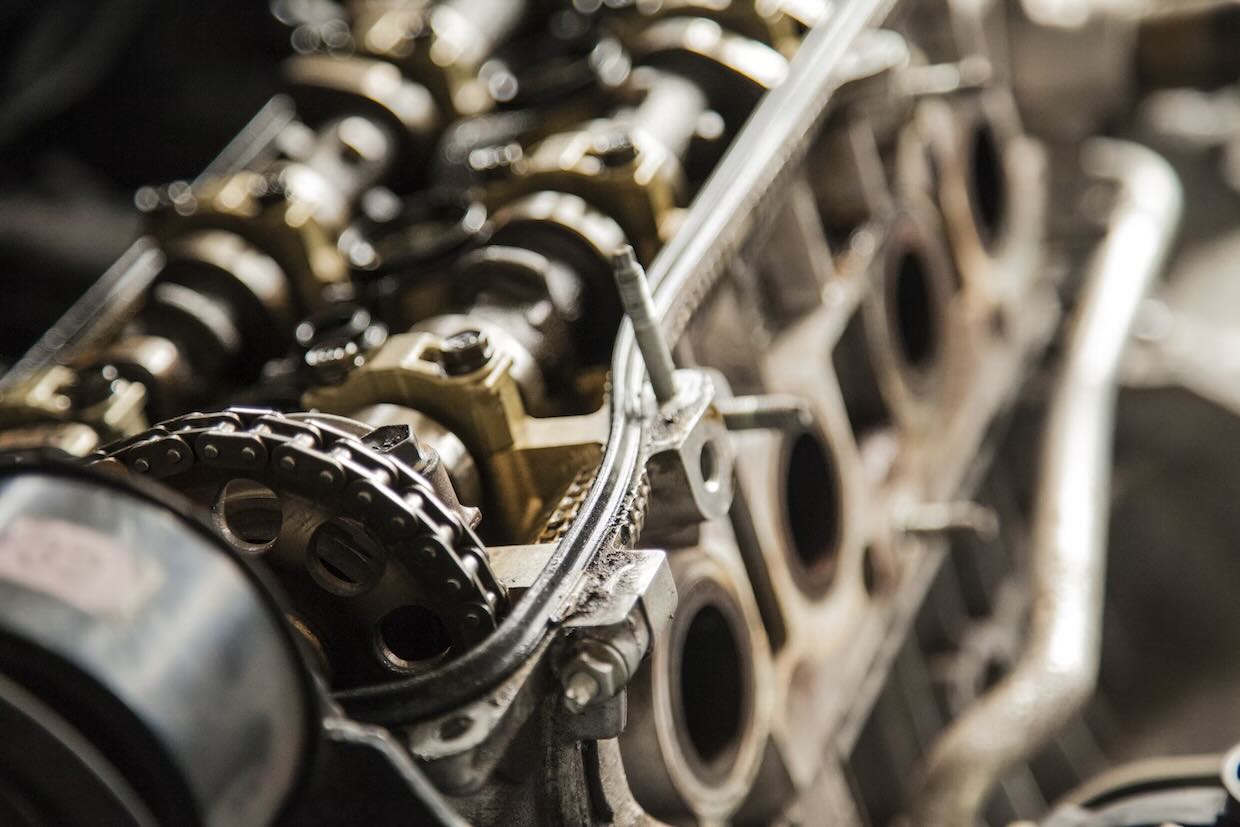Replacing a cylinder head gasket is no small feat, especially in heavy-duty diesel engines where the stakes—and the costs—are higher. It’s a job that demands precision, patience, and a strong understanding of how combustion chambers, head bolts, and sealing surfaces interact under pressure. Get any of it wrong, and you’re looking at recurring leaks, poor engine performance, or worse—a full rebuild.
Although the broad shift towards electric vehicles is expected to limit the growth of the head gasket market for personal vehicles (source), the need for replacements and repairs, especially for heavy-duty diesel workhorses, aren’t going away any time soon. At Behind the 8, we’ve seen the difference that a properly installed head gasket can make—and the problems that arise when corners are cut.
Here are some of the most common mistakes people make during a cylinder head gasket replacement—and how to avoid them.
Skipping Surface Inspection and Preparation
It all starts with the sealing surface. If the mating surfaces of your cylinder head and cylinder block aren’t perfectly flat, no gasket—new or not—will seal properly. Warped aluminum cylinder heads are especially common in overheated engines. Use a straight edge and feeler gauge to check for warping. If needed, get the head resurfaced before installation.
And don’t rush through gasket removal. Scraping off the old gasket with a razor blade might seem effective, but it can leave behind debris or even gouge the surface. Use appropriate cleaning tools and solvents, not aggressive scraping. Speaking of solvents, avoid solvent based gasket makers near sensitive areas—they can deteriorate gasket material and disrupt sealing.
Choosing the Wrong Gasket Material
One size doesn’t fit all. Using the wrong gasket material or choosing a generic fit over the correct replacement gaskets can lead to premature gasket failure. For example, engines with high combustion pressure benefit from coated gaskets or even copper wire ring reinforcements.
Pay attention to engine specs and applications. If you’re unsure what type of cylinder head gasket suits your application, check out our Caterpillar C15 ACERT upper head gasket set. Still unsure? Contact us—we’re happy to help.
Ignoring Head Bolt Procedures
This one trips up even experienced techs. Reusing old head bolts can compromise clamping force. These bolts often stretch during use and won’t provide the torque needed for a proper seal the second time around.
Also, always check if your engine uses torque-to-yield bolts or standard bolts. Use a proper torque wrench and follow the correct tightening sequence and torque specs. Don’t forget to clean bolt threads and bolt holes thoroughly. Blind bolt holes in particular can trap oil or coolant, which can cause hydraulic lock and distort torque readings.
Overusing or Misusing Gasket Maker
Gasket maker has its place, but using it excessively—or in the wrong places—can block oil passages or cause the gasket not to seat correctly. Only use gasket maker where the service manual recommends. Too much can be worse than none at all.
Overlooking Cooling and Oil System Checks
A failing gasket often results from underlying engine problems. Before installing the new head gasket, inspect the cooling system for clogs or weak flow. Check the thermostat, radiator, and water pump.
Also look for signs of coolant in engine oil or vice versa. A mix of the two may indicate a cracked head, block, or ongoing head gasket issues.
Forgetting to Recheck After Assembly
Once the engine is reassembled, don’t just fire it up and drive off. After replacing a head gasket, you should:
- Monitor engine oil and coolant levels over the first few runs.
- Look for bubbles in the coolant reservoir (a sign of combustion leaks).
- Watch for overheating or any sign of poor engine performance.
- Re-torque head bolts if specified by your engine manufacturer.
Don’t assume it’s fixed until you’ve confirmed it!
What Else Should I Do When Replacing a Head Gasket?
In addition to replacing the gasket and torquing everything properly:
- Inspect the cylinder heads for cracks or wear (see our available parts).
- Replace any corroded or damaged fasteners.
- Check the mating surfaces with a straight edge again post-cleaning.
- Use only high-quality new gasket sets that match your engine’s needs.
What Destroys a Head Gasket?
Gasket failure is usually a symptom, not the root cause. Common culprits include:
- Engine overheating
- Detonation or pre-ignition
- Improper installation or torque sequence
- Use of poor-quality or incorrect gasket material
Take the Guesswork Out of Gasket Replacement
Replacing a head gasket can be intimidating, but it doesn’t have to be a gamble. With the right tools, correct parts, and a careful approach, you’ll avoid the most common pitfalls and extend the life of your diesel engine.
And if you’re ever unsure about which replacement gaskets or cylinder head components you need, BehindThe8 has your back, bringing over 25 years of hands-on diesel experience to the table. Need help sourcing hard-to-find parts? Contact us today.



Comments are closed